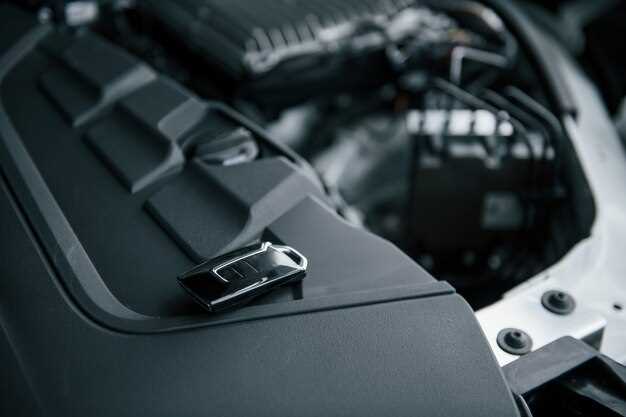
When it comes to improving the performance of a BMW, enthusiasts often turn to modifications that promise to enhance engine efficiency and power output. Among these popular options is the cold air intake system, designed to increase the flow of cooler air into the engine. This crucial air supply can impact the combustion process, potentially leading to significant performance gains.
The basic premise behind a cold air intake is simple: cooler air is denser than warm air, meaning it contains more oxygen molecules. By replacing the factory air intake with a more efficient aftermarket model, BMW owners aim to optimize their engine’s performance. However, the effectiveness of this mod depends on various factors, including the specific BMW model, driving conditions, and the quality of the intake system being installed.
In this article, we will explore the mechanics behind cold air intakes, their potential benefits, and the key considerations one should keep in mind before deciding to implement this air-intake mod. We will also discuss how these systems can influence overall performance metrics, such as horsepower and torque, while assessing real-world results observed by BMW enthusiasts.
Understanding the Mechanics of Cold Air Intakes in BMW Models

Cold air intakes are designed to optimize the performance of BMW engines by increasing the amount of cool air that flows into the combustion chamber. The fundamental principle behind this enhancement lies in the relationship between air temperature and density. Cooler air is denser than warm air, which allows for a more substantial amount of oxygen to be present during combustion. This increased oxygen supply promotes better fuel combustion, ultimately boosting engine performance.
The mechanics of a cold air intake system involve several key components, including the intake tube, air filter, and sometimes an external heat shield. The intake tube is usually made from high-quality materials that facilitate smooth airflow and reduce turbulence. By elongating the path that air must travel, these systems minimize heat absorption from the engine bay, ensuring the air remains cooler. High-performance air filters used in these systems also contribute to improved airflow while filtering out contaminants more effectively than standard filters.
As air enters the intake system, it travels through the designated pathway, where it is conditioned to maintain optimum temperature before reaching the engine. This process leads to a higher throttle response and enhanced horsepower output. For BMW models, the integration of cold air intakes often results in a more aggressive engine note, adding to the driver’s overall experience.
In summary, cold air intakes leverage the principles of thermodynamics and fluid dynamics to enhance engine performance in BMW vehicles. By facilitating cooler air access, they play a crucial role in maximizing horsepower and improving overall responsiveness, providing a significant advantage for performance enthusiasts.
Real-World Performance Improvements from Installing a Cold Air Intake

Installing a cold air intake on a BMW can lead to noticeable real-world performance improvements. By enhancing the airflow to the engine, a cold air intake allows for a greater volume of cooler, denser air to enter the combustion chamber. This increase in air density can result in more efficient combustion, translating to improved horsepower and torque output.
One of the primary benefits observed after the mod is a boost in throttle response. Enthusiasts often report a more immediate and responsive acceleration, making the driving experience more engaging and dynamic. The improved airflow allows for quicker engine revs, enhancing the vehicle’s overall performance traits.
Moreover, cold air intakes can contribute to better fuel efficiency under certain driving conditions. By optimizing the air-fuel mixture through increased intake air volume, it can lead to more consistent combustion patterns, potentially resulting in a reduction in fuel consumption. Drivers may notice longer distances traveled on a single tank, particularly during highway cruising.
It’s important to note that the extent of these performance gains can vary depending on the specific BMW model, the quality of the cold air intake system, and any additional mods currently implemented. Overall, these improvements provide tangible benefits, making the installation of a cold air intake a popular choice among BMW enthusiasts seeking enhanced performance.
Potential Downsides and Considerations for BMW Owners
While cold air intakes are popular among BMW enthusiasts seeking enhanced performance, there are several potential downsides and considerations to keep in mind. First, the installation of a cold air intake can sometimes void the vehicle’s warranty. Manufacturers may argue that modifications to the intake system could lead to warranty claims being denied, particularly if related to engine issues.
Another concern is the potential for increased engine noise. While some may appreciate the aggressive sound that accompanies a modified intake, others may find it undesirable, especially during everyday use. Additionally, a louder intake can lead to increased cabin noise, impacting overall driving comfort.
Furthermore, cold air intakes can affect the vehicle’s air-fuel mixture. If not properly tuned, this modification may result in suboptimal performance or even engine damage over time. It is essential to ensure that the engine management system can adapt to the new airflow patterns created by the intake.
Lastly, the exposure to engine bay temperatures can sometimes offset the benefits of increased airflow. In certain situations, a cold air intake could draw warmer air from the engine bay, negating the performance advantages originally sought. Owners should weigh these factors carefully before proceeding with installation, considering both short-term goals and long-term vehicle health.
